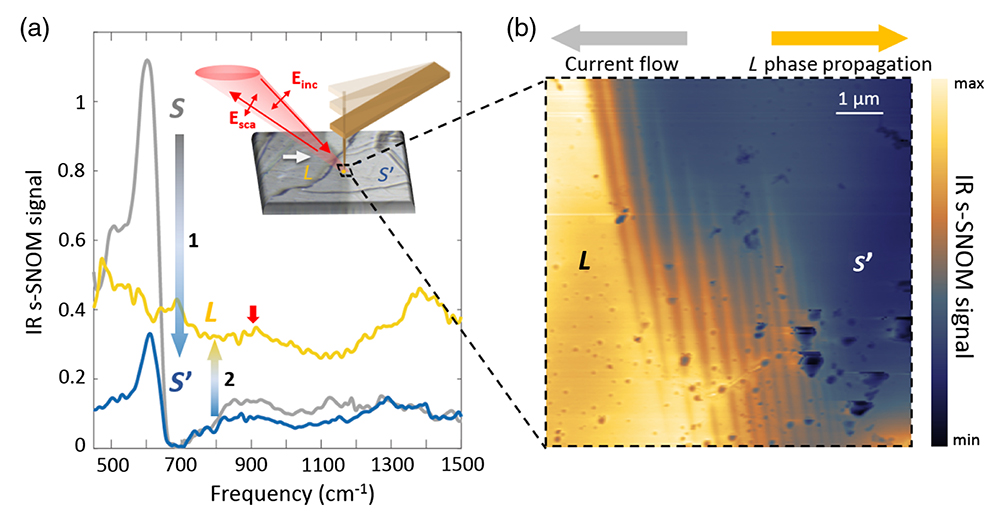Many materials can make the transition from nonconducting (insulator) to conducting (metal) through applied pressure, temperature, or radiation. However, the transition-metal oxide Ca2RuO4 can make this switch using a very modest electric current, making potential applications to energy-efficient memory and transistor devices possible.
To better understand the microscopic nature of this insulator-to-metal transition, researchers used infrared (IR) techniques to probe the metal-insulator boundary in a single Ca2RuO4 crystal. In particular, they studied changes in the domain wall separating the growing metallic state from the insulating state as the applied current increased.
Through a combination of broadband IR nanospectroscopy at ALS Beamline 5.4 and scattering-type scanning near-field optical microscopy (s-SNOM), the researchers found that the metallic phase originates at the negative electrode, propagating with increasing current. Switching the polarity of the electrodes reversed the direction of the metallic-phase growth.
The most intriguing observation, however, was the spontaneous development of submicron stripe patterns of alternating metal and insulating phases at the metal-insulator phase boundary, with the stripe orientation tied to the material’s crystallographic axes. The researchers argue that the microstripes form as a result of strain due to an elastic mismatch, since the insulator-to-metal transition involves a large out-of-plane lattice expansion and a unique anisotropic in-plane lattice shrinking. Future studies under applied strain would clarify the microscopic mechanism of current-induced metallization in this compound.
In general, the results support an electrically induced insulator-to-metal transition scenario fundamentally distinct from the filamentary metallization common to high-field resistive switching reported in other oxides.

J. Zhang, A.S. McLeod, Q. Han, X. Chen, H.A. Bechtel, Z. Yao, S.N. Gilbert Corder, T. Ciavatti, T.H. Tao, M. Aronson, G.L. Carr, M.C. Martin, C. Sow, S. Yonezawa, F. Nakamura, I. Terasaki, D.N. Basov, A.J. Millis, Y. Maeno, and M. Liu, “Nano-Resolved Current-Induced Insulator-Metal Transition in the Mott Insulator Ca2RuO4,” Phys. Rev. X 9, 011032 (2019), doi:10.1103/PhysRevX.9.011032.